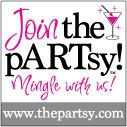There are really two parts to this "lesson". The first is buying your materials, the second selecting the materials for each individual piece.
Buying Materials
- If you're buying on the internet make sure you check the description carefully. Beads often look bigger or sometimes smaller than their actual size on photos. The colour is often difficult to tell on a photo as the pictures you see depend on the camera/light conditions when the photo was taken but also on the settings of your monitor. Red is a particularly difficult colour to photograph. Also check the prices. When you are buying on eBay often many sellers will sell the same beads but at different prices. Compare the prices AND the different P&P charges. Then, check the feedback of the person you are buying from.
I buy from many different people on eBay, some have become friends over time, others I just buy from once because they have a particular item I especially like. - If you're buying in shops, consider that there is usually a higher markup for the shop to cover costs. Some items are still worth buying either because they're special or because you were after a bead in a particular colour/size/shape. Shops are good to see the actual shape and colour of a bead.
- If you're buying on an antiques fair or carboot sale, choose carefully. Look at the necklace/bracelet/earring and see if it can be taken apart and if you can use readily available findings (headpins, eyepins) to make it part of a new design. Also check the tear and wear on the beads, check if clasps can be reused (often these are quite pretty but have bits missing, e.g. little diamonte beads, that can occasionally be replaced with modern ones). I've managed to find some quite beautiful vintage beads this way. Check out the hair clip I made to see some of them. However, always check the price and roughly estimate what each bead would cost you. Often these are slightly more expensive than their modern counterparts, however they often have a lovely patina which is well worth the extra money. It's also worth trying to haggle. Something you can't do in a shop or the internet.
This, in my humble opinion, is the most important stage of every design.
- Think about your design beforehand. I often have a picture in my mind that I then try and recreate in the design. For example White Water. I saw the movement and flow of the water in my mind and then tried to translate the feel of it into the jewellery I was about to make.
- It is very important that your findings and the colours of the beads work together. There are certain combinations that always work, black beads and silver findings, red beads and gold findings, turquoise/blue beads and copper findings, etc. However, it's worth playing around with these combinations. I find purple and copper work well together and this combination looks completely different from silver and purple and is much warmer and softer.
- Choose your beads. Even if you are sure of colour and know how to use it on paper or with fabric, think again. Beads, often faceted, lustred or with other colours mixed in sparkle off each other and, depending on how you combine them, create different effects, often not the desired one. I always lay out my beads on my bead mat before I start putting them on findings. There are lovely bead boards, some with a lid and measurements, that will allow you to lay out your beads into a groove in the board so you can create the necklace/bracelet without the findings and see how it will all work together. The other advantage is that it makes it easier to "centre" a design and to easily design different lengths for bracelets and necklaces without having to measure the design all the time. The final advantage of a bead board with a lid is that you can leave your work in a safe place, e.g. overnight.
If you are just starting out, here are a few tips:
- Get yourself a kit that includes all the findings and beads. You can get nice ones on eBay or in shops. This will let you try it out before you commit yourself.
- Get yourself a book about colour if you are unsure about the use of colour. You don't have to buy one, but can find them easily in your local library.
- If you find you really enjoy beading, start of with a few bead mixes in different colours. They will give you something to start with and mean that you don't have to spend a fortune to begin with.
- Seedbeads are available in a myriad of colours. If you start of with bead mixes, get your seedbeads in coordinating colours. You can get good buys on three or more packs of seedbeads in several colours. Check out eBay for good buys. However, a word of caution, the quality of seedbeads varies a great deal. Cheap is definitely not always best as bad quality seedbeads will vary in size and have imperfections. Simply Seed Beads offers a great range of colours in excellent quality Czech and Japanese seedbeads of varying sizes, cube and other small beads.
- Homebeads is a great place to buy findings in larger quantities. Concentrate on one colour (silver, gold, copper, bronze, or black plated) at first. You can always extend your range later on.
- Make sure you get the right tools. You need pliers that are smooth on the inside (where you grab the findings) so you don't damage the findings. Some electrical pliers are fine, but check them first. A lot of people sell jewellery pliers at huge prices, instead you might want to try your local DIY shop for electrical pliers that are smooth on the inside as these are often much cheaper.
- For some designs you will need glue. I use superglue that can be applied with a brush. I found this the easiest one to use as it is simple to apply and allows more control than the ones in tubes or bottles.
- Look around in shops what you like and see how it's been made. This will give you a great starting point.
- Finally, check out the net for info on how to make certain designs. There are loads and loads of tutorials around, written by bead enthusiasts that explain in great detail how to achieve a certain effect or how to do a particular design.








































No comments:
Post a Comment